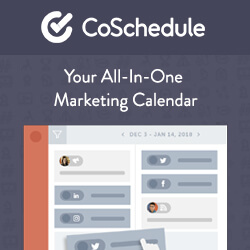Email marketing is a very effective way of reaching your audience. If it is done well, it is the most effective way of driving traffic to your site. I explain why in this post. Done poorly, email marketing can be a huge waste of time and money.
So, how do you know if your email marketing is on the right track? Here are 5 metrics you should be tracking with your email campaign. (Click here for a more in depth set of metrics and a free email marketing tracking sheet from HubSpot).
1. Click through rate (CTR) is the most obvious metric to track. Click through rate is simple the percentage of email message recipients who click on a specific message.
Here’s how you calculate it:
(links clicks/email sent) * 100. Example: If you send 1000 emails and 50 people click – you have a 5% click through rate
Of course, in order to determine click through rate, you need to make sure you have a call to action (or a link to click on) in every single email that goes out. Click here to learn what is good click-through rate for your industry. In the business coaching niche, we consider 2-5% to be a good CTR.
2. Conversion rate
The metric that most people focus on in email marketing is conversion rate. The conversion rate is the percentage of your email recipients who click on a link and complete what you ask them to do (usually fill out a lead form, or buy a product). The easiest way to calculate the conversion rate is:
(number of people who bought/signed up/total number of people who went to the link * 100.
So, if you send an email to 400 people, 40 people click the link, and 4 people purchase, your conversion rate is 10%. The trick is knowing that the person who signed up or bought came from that particular email. You can get that information by installing web analytics on your site or just creating a special tracking link for each email.
3, Bounce Rate Bounces are the postal service equivalent of “return to sender – address unknown”. There are two types of bounces, hard bounces and soft bounces. Soft bounces are due to temporary technical blips. Hard bounces are emails to accounts that are closed or otherwise will never be delivered. Too many hard bounces can ruin your email sending reputation and make you look like a spammer. If you are getting too many hard bounces, you should go into your email service and delete the no longer valid contacts from your database.
4. List Growth This is another easy to track metric. You want to keep track of list growth over time. And, yes, you do need to ONLY count your real list – you need to subtract the unsubscribes and hard bounces from your total number. The best way to grow your list is to have a percentage growth goal and to track your progress. For more help with list growth, check out my List Building Challenge.
5. Email Sharing/Forwarding Are you asking your subscribers to share and forward your emails? Even though most won’t – it doesn’t hurt to ask and it can be a great source of traffic for your site. Keeping track of which emails get the most shares, will help you tailor your content to your audience.
Now, that you know how to measure your success, the next step is figuring out which emails to send. I taught a free webinar on this topic – Triple Your Sales with 4 Email Sequences.





